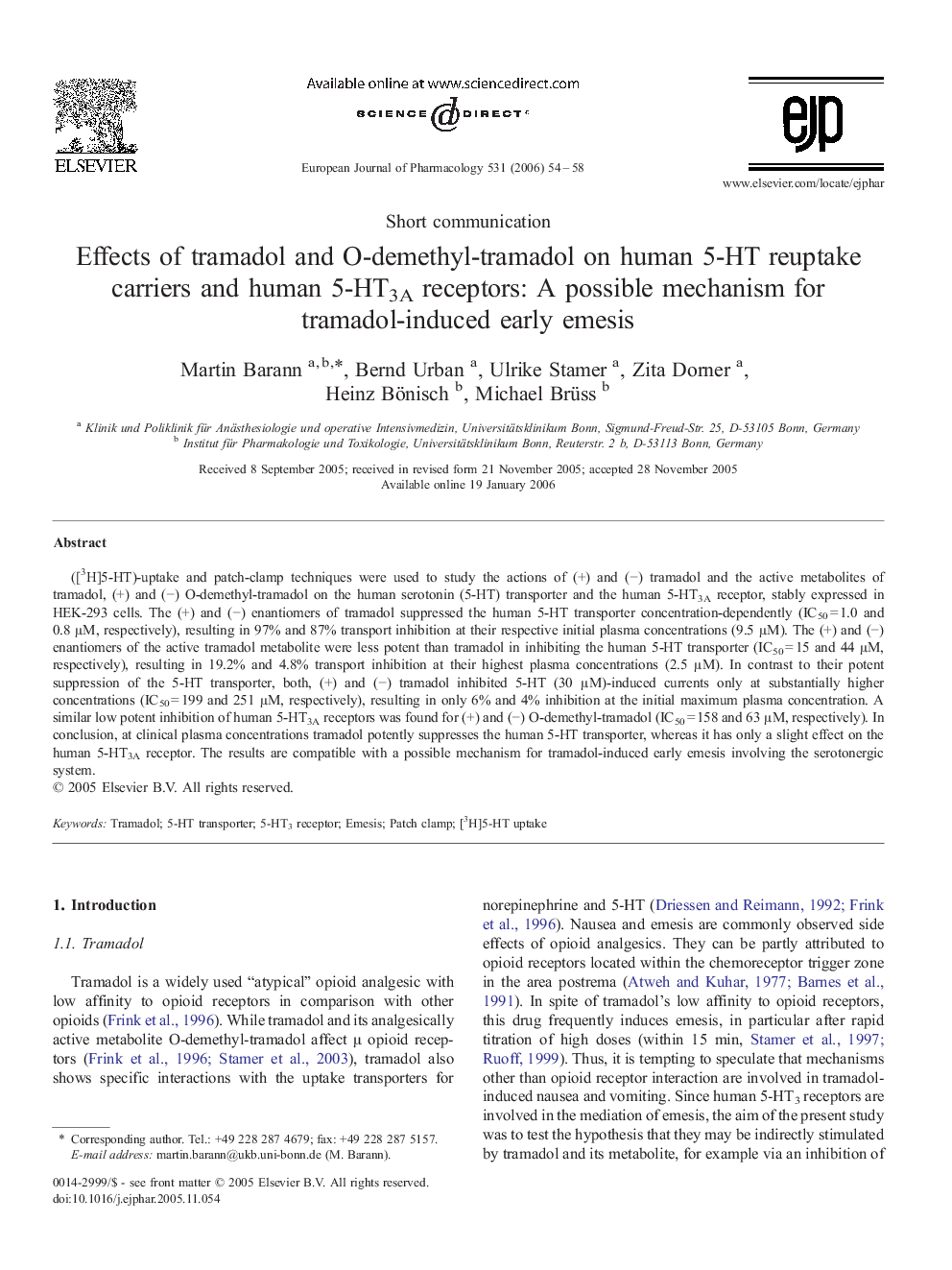| Article ID | Journal | Published Year | Pages | File Type |
|---|---|---|---|---|
| 2537404 | European Journal of Pharmacology | 2006 | 5 Pages |
([3H]5-HT)-uptake and patch-clamp techniques were used to study the actions of (+) and (−) tramadol and the active metabolites of tramadol, (+) and (−) O-demethyl-tramadol on the human serotonin (5-HT) transporter and the human 5-HT3A receptor, stably expressed in HEK-293 cells. The (+) and (−) enantiomers of tramadol suppressed the human 5-HT transporter concentration-dependently (IC50 = 1.0 and 0.8 μM, respectively), resulting in 97% and 87% transport inhibition at their respective initial plasma concentrations (9.5 μM). The (+) and (−) enantiomers of the active tramadol metabolite were less potent than tramadol in inhibiting the human 5-HT transporter (IC50 = 15 and 44 μM, respectively), resulting in 19.2% and 4.8% transport inhibition at their highest plasma concentrations (2.5 μM). In contrast to their potent suppression of the 5-HT transporter, both, (+) and (−) tramadol inhibited 5-HT (30 μM)-induced currents only at substantially higher concentrations (IC50 = 199 and 251 μM, respectively), resulting in only 6% and 4% inhibition at the initial maximum plasma concentration. A similar low potent inhibition of human 5-HT3A receptors was found for (+) and (−) O-demethyl-tramadol (IC50 = 158 and 63 μM, respectively). In conclusion, at clinical plasma concentrations tramadol potently suppresses the human 5-HT transporter, whereas it has only a slight effect on the human 5-HT3A receptor. The results are compatible with a possible mechanism for tramadol-induced early emesis involving the serotonergic system.
